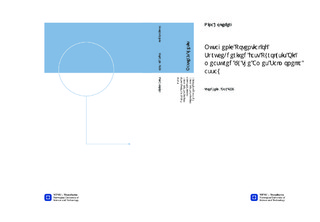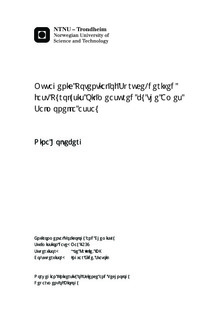| dc.description.abstract | Biomass conversion to biofuels is promising for production of renewable energy. Biofuels are sustainable, CO2-neutral, recognized to be cleaner than fossil fuels, but their combustion generates noxious gases and genotoxic substances and combustion of different types of biofuels has been associated with an increased incidence of lung cancer. Pyrolysis of biomass is the most efficient biofuel-producing conversion process and generates pyrolysis oil, or bio-oil, of which upgradation techniques are under development in order to produce green fuels, and similar to other biofuels genotoxic abilities have been shown in bio-oil.The main purpose of this project was to measure the mutagenic potential of crude pyrolysis oil through application of the preincubation version of the Ames assay using bacterial strains TA98 and TA100 with and without the metabolically active S9-mix in order to assess bio-oil s ability to induce frameshift-mutations and base-pair substitutions in terms of primary or secondary mutagenicity. The Ames assay was chosen because of its ability to screen complex chemical mixtures for content of chemical mutagens. The sample material consisted of seven spruce-derived fast pyrolysis oils obtained from different relative proportions of wood, bark and needles, which created a unique opportunity to study the feedstock components influence on mutagenic potential. Three of the oils were obtained from 100 % of wood, bark or needles while the remaining four oils derived from mixed feedstock compositions. With limited chemical data available on the oils, the aims of this project were to determine the types of mutations the bio-oils would induce and how the feedstock composition would influence the mutagenic potential, as well as trying to predict the mutagenic potential of the oils through a partial least square (PLS) regression model based solely on their feedstock composition.The mutagenic potential of the concentration ranges of bio-oil test-solutions showed that all but the purely needle-derived oil induced positive test results under at least two of the four test conditions (TA98, TA98 + S9, TA100 and TA100 + S9) as well as evoking bacterial toxicity at different concentrations. Presence of primary and secondary mutagens inducing frameshift mutations and base-pair substitution were indicated in one or more of the oils, however with a higher frequency of positive test results for base-pair substitutions. The metabolically active S9 decreased the oil-evoked bacteriotoxic effect in both strains and generally lead to decreased reversion frequencies in TA98 and increased reversionIIIfrequencies in TA100. The results demonstrated that both bacteriotoxic and mutagenic properties in spruce-derived fast pyrolysis oils were influenced by spruce feedstock composition and the statistical analyses showed that wood was the feedstock component contributing the most to the bio-oil-induced mutagenic potential.The positive Ames assay results in this study suggest that crude spruce-derived bio-oils may contain hazardous compounds which in this case were unidentified. However, as crude pyrolysis oil needs upgradation in order to be utilized as a high quality fuel, the probability of potential hazard from exposure to crude bio-oils like the ones in this project is rather small. The results of this project demonstrated mutagenic potential in crude bio-oil, but it would be useful to conduct mutagenicity assessment on more refined pyrolysis oil in order to see if the mutagenic potential will decrease after performance of various upgradation techniques on pyrolysis oil. | nb_NO |

